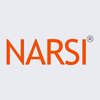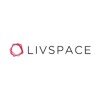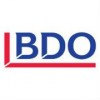Filter interviews by
Narsi & Associates Safety Officer Interview Questions and Answers
Narsi & Associates Safety Officer Interview Experiences
1 interview found
I applied via LinkedIn and was interviewed before Jan 2022. There were 3 interview rounds.

(2 Questions)
- Q1. Experience in safety field
- Ans.
I have 5 years of experience working as a Safety Officer in various industries.
Implemented and monitored safety programs to ensure compliance with regulations
Conducted safety inspections and audits to identify hazards and risks
Developed and delivered safety training programs for employees
Investigated accidents and incidents to determine root causes and prevent future occurrences
- Q2. Company name and client or pmc
(1 Question)
- Q1. Hira and safety culture in company
- Ans.
HIRA stands for Hazard Identification and Risk Assessment. Safety culture in a company refers to the attitudes, beliefs, perceptions, and values that employees share in relation to safety in the workplace.
Explain the importance of conducting HIRA to identify potential hazards and assess risks in the workplace.
Discuss how a strong safety culture can lead to increased employee engagement, productivity, and overall well-b...
Interview Preparation Tips
Top trending discussions






Interview questions from similar companies


(5 Questions)
- Q1. What is work at height
- Ans.
Work at height refers to any activity that takes place above ground level, where there is a risk of falling and causing injury or death.
Work at height includes tasks such as working on ladders, scaffolding, roofs, or elevated platforms.
It involves activities like construction, maintenance, installation, and repair work.
Safety measures like fall protection systems, guardrails, and personal protective equipment (PPE) are...
- Q2. What will see safety during work at height
- Ans.
Safety during work at height includes proper equipment, training, and risk assessment.
Use appropriate fall protection equipment such as harnesses, lanyards, and anchor points.
Ensure workers are trained on how to use the equipment correctly and safely.
Conduct thorough risk assessments before starting any work at height to identify potential hazards.
Implement control measures to minimize risks, such as installing guardra...
- Q3. What will you do after meeting a new worker at site
- Q4. What are you thinking about PPE
- Ans.
PPE stands for Personal Protective Equipment and is crucial for ensuring the safety of workers in various industries.
PPE includes items such as helmets, gloves, safety glasses, and protective clothing.
It is important to assess the specific hazards of a job or workplace to determine the appropriate PPE.
Regular inspection, maintenance, and replacement of PPE is necessary to ensure its effectiveness.
Training and education...
- Q5. How will worker send on height
- Ans.
Workers can send on height by using safety harnesses and fall protection equipment.
Workers should always wear a safety harness when working at heights.
Fall protection equipment such as guardrails, safety nets, and lifelines should be used to prevent falls.
Regular inspections and maintenance of equipment should be conducted to ensure their effectiveness.
Workers should receive proper training on how to use safety equipme...
Interview Preparation Tips

I applied via Recruitment Consulltant and was interviewed in Jun 2024. There was 1 interview round.
(7 Questions)
- Q1. What is Safety ?
- Ans.
Safety is the state of being protected from harm, danger, or injury.
Safety involves identifying and minimizing risks in the workplace or environment.
It includes following safety protocols and procedures to prevent accidents.
Safety also involves providing proper training and equipment to ensure protection.
Examples: wearing personal protective equipment, following fire safety protocols, conducting safety inspections.
- Q2. Tell me about hira
- Q3. Tell me about risk assessment
- Ans.
Risk assessment is the process of identifying, analyzing, and evaluating potential risks in order to determine the best course of action to minimize or eliminate them.
Identifying potential hazards and risks in the workplace or environment
Analyzing the likelihood and severity of each risk
Evaluating the level of risk and determining appropriate control measures
Implementing control measures to reduce or eliminate the iden...
- Q4. Tell me about near miss .
- Q5. Tell me about SCM
- Ans.
Supply Chain Management (SCM) involves the coordination and management of all activities involved in sourcing, procurement, production, and logistics.
Involves planning, implementing, and controlling the flow of goods and services from point of origin to point of consumption
Includes activities such as sourcing raw materials, manufacturing products, and distributing finished goods
Focuses on optimizing processes to minimi...
- Q6. What is mock dril ?
- Ans.
A mock drill is a simulated emergency exercise conducted to test the preparedness and response of individuals and organizations.
Mock drills are conducted to practice emergency procedures without the actual risk or consequences.
They help identify strengths and weaknesses in emergency response plans.
Mock drills can involve scenarios like fire drills, earthquake drills, active shooter drills, etc.
Participants are expected...
- Q7. What is emergency plan ?
- Ans.
An emergency plan is a set of procedures and guidelines to follow in case of a crisis or disaster.
Emergency plans outline specific actions to take during emergencies
They include evacuation procedures, communication protocols, and emergency contacts
Emergency plans are tailored to specific types of emergencies, such as fires, natural disasters, or medical emergencies
Interview Preparation Tips


(5 Questions)
- Q1. What is work at height
- Ans.
Work at height refers to any activity that takes place above ground level, where there is a risk of falling and causing injury or death.
Work at height includes tasks such as working on ladders, scaffolding, roofs, or elevated platforms.
It involves activities like construction, maintenance, installation, and repair work.
Safety measures like fall protection systems, guardrails, and personal protective equipment (PPE) are...
- Q2. What will see safety during work at height
- Ans.
Safety during work at height includes proper equipment, training, and risk assessment.
Use appropriate fall protection equipment such as harnesses, lanyards, and anchor points.
Ensure workers are trained on how to use the equipment correctly and safely.
Conduct thorough risk assessments before starting any work at height to identify potential hazards.
Implement control measures to minimize risks, such as installing guardra...
- Q3. What will you do after meeting a new worker at site
- Q4. What are you thinking about PPE
- Ans.
PPE stands for Personal Protective Equipment and is crucial for ensuring the safety of workers in various industries.
PPE includes items such as helmets, gloves, safety glasses, and protective clothing.
It is important to assess the specific hazards of a job or workplace to determine the appropriate PPE.
Regular inspection, maintenance, and replacement of PPE is necessary to ensure its effectiveness.
Training and education...
- Q5. How will worker send on height
- Ans.
Workers can send on height by using safety harnesses and fall protection equipment.
Workers should always wear a safety harness when working at heights.
Fall protection equipment such as guardrails, safety nets, and lifelines should be used to prevent falls.
Regular inspections and maintenance of equipment should be conducted to ensure their effectiveness.
Workers should receive proper training on how to use safety equipme...
Interview Preparation Tips
Narsi & Associates Interview FAQs
Tell us how to improve this page.
Interview Questions for Popular Designations
- Safety Supervisor Interview Questions
- Fire & Safety Officer Interview Questions
- Senior Safety Officer Interview Questions
- Safety Engineer Interview Questions
- Safety Manager Interview Questions
- Drug Safety Associate Interview Questions
- Safety Supervisor, Safety Officer Interview Questions
- Safety Executive Interview Questions
- Show more
Narsi & Associates Safety Officer Interview Process
based on 1 interview
Interview experience
Interview Questions from Similar Companies
Narsi & Associates Safety Officer Reviews and Ratings
based on 11 reviews
Rating in categories
|
Safety Officer
40
salaries
| ₹2.2 L/yr - ₹5 L/yr |
|
Senior Safety Officer
10
salaries
| ₹3.4 L/yr - ₹4 L/yr |
|
Maintenance Engineer
10
salaries
| ₹2 L/yr - ₹6.1 L/yr |
|
Procurement Executive
8
salaries
| ₹3.6 L/yr - ₹5.2 L/yr |
|
Project Coordinator
8
salaries
| ₹4.8 L/yr - ₹7.7 L/yr |

Deloitte

PwC

KPMG India

Ernst & Young
- Home >
- Interviews >
- Narsi & Associates Interview Questions >
- Narsi & Associates Safety Officer Interview Questions












